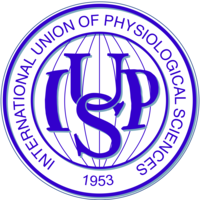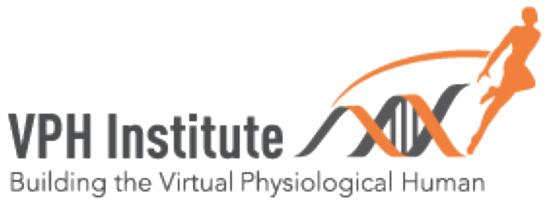Instructions for Authors
Instructions for Authors
The model files submitted to Physiome must be reusable, and associated with at least one article accepted by a peer-reviewed journal in the field of physiological modelling (a Primary Publication). Authors are encouraged to prepare their Physiome submission(s) in parallel to the Primary Publication. Submissions will be curated and evaluated, but not published until the Primary Publication is accepted.
For queries, see the Frequently Asked Questions. Otherwise, email the curators. Include the submission identification number if querying a specific submission.
Types of submissions¶
The following will be considered for publication in Physiome:
Original submission¶
Original submissions are author-initiated submissions directly associated with a primary experimental or modelling paper, aiming to reproduce the published model using the implementation used in producing the primary paper. While matching authorship between the Physiome submission and the primary publication is not a requirement, it is expected that there is some overlap. The Physiome team can help with reaching out to additional authors if needed.
In cases where the original implementation is not able to be made available with the Physiome submission or if it in a non-standard format, authors may supplement their Physiome submission with a new implementation, preferably in a standard format, which demonstrates reproducibility of the primary paper.
Retrospectives¶
A retrospective is a submission which is a new implementation of a published model that broadly reproduces the results presented in the primary paper. Where possible, the authors of retrospective should include authors from the primary publication. Retrospectives may include additional aspects that help put the primary paper in a current context.
When submitting a retrospective, it is best to first submit an expression of interest to the editors outlining why the original primary publication should be considered a suitable contribution to Physiome.
Reviews¶
The Physiome editorial board may solicit review submissions that document a range of published models in a given area. Such reviews will make use of previously accepted Physiome submissions, often applying new data or simulation experiments to explore the capabilities of the various models. They may also point to areas of the research field lacking reproducible and reusable models.
Reviews do not require a Primary Publication.
Letters¶
This is an original submission that provides new insights about, or refinement of, a model that is already published in Physiome. This format allows publication of material that in itself may not justify a separate submission to a primary journal, but which may still be highly instrumental for improving an existing model, expand its empirical scope or invoke experimental and theoretical research that may drive new model development.
Examples of such material include, but are not restricted to:
- experimental measurements of important parameter values that have been only indirectly estimated in the original paper
- empirically or theoretically justified questioning or refutation of critical model premises
- experimental data confirming or refuting model predictions
- theoretical analyses of the model that provide novel insights that may spur further model development or experimental work
Preparing your submission¶
The Physiome submission must include all the resources required to evaluate the reproducibility, reusability, and discoverability of the model.
Every Original or Retrospective submission in Physiome must be associated with at least one Primary Publication. It is encouraged that the authors of the Primary Publication are included as authors in the Physiome paper.
A Physiome article consists of a description and the code of a reproducible implementation of the model. Such resources can be directly included in the ZIP archive submitted to Physiome, or linked to via appropriate online repositories or databases. A list of the databases used by Physiome can be found in Table 1.
While there are many different types of models, file types and structures used by modelers, there are some items which are common to all Physiome submissions. These must be included in your upload to the submission portal:
- A manuscript, which should be prepared using the Physiome Overleaf template.
- The .tex file used to generate the manuscript. From the Overleaf template, download the source and upload the .zip file.
- Source code for the model. Instructions on how to run them in order to reproduce the results must be presented in the manuscript.
The manuscript¶
This manuscript should only contain information pertaining to the reproduction of results of the primary paper. As such, information on background biology and study aims or conclusions should not be repeated from the primary paper, and no new information is to be included. Furthermore, model parameter values and units may already be present in the model files associated with this Physiome submission, and thus do not need to be repeated within the manuscript.
Below are the suggested sections to comprise a submission to Physiome.
- Introduction
- A brief explanation of the biological system modelled. Make sure to define the biological entities and species used in the primary papers. Clearly reference previously published iterations of the model to establish provenance, and any data that has been used for validation.
- Model Description
- An overview of the type of model and its structure. As the model code submitted should be complete, all parameter values, units, etc. will be included in your files and are not required to be printed in the article.
- Model Modifications
- Any modifications made to the model as presented in the primary publication, while providing motivations for doing so. Include corrections, missing parameter values taken from other sources, reformulation of equations, etc. Provide references to the origins of the parameter values, if not defined in the primary publication.
- Computational Simulation
- All relevant information on how to run the model. This includes, but is not limited to, definitions of libraries, versions of simulation packages, computational solvers and time steps used, type of machine the code was originally executed on, etc.
- Reproducibility goals
- Figures showing that the code simulates the same graphs as shown in the primary paper. Any differences are explained.
- Discussion
- Discuss the results and the model reliability.
- Figures
- Ensure the graphs presented in the manuscript are the same as the ones produced by your submitted code.
- Use high quality images. Recommended image formats are PDF for plots, graphs, and diagrams, and JPG for photographic images. Advice on image handling in Overleaf can be found here. Maximum image size is 1MB. See here for treatment of large images.
- Use a sans serif font for text in the figures, of at least 10pt font size in the final image in the manuscript.
- Figures copied from the primary paper (or elsewhere) must be used with permission from the original publisher.
- Bibliography
- We recommend that, where possible, the DOI be included in citations of academic papers. See
sample.bibof the Overleaf template on how to include this.
The source code¶
Source codes for the model implementation can be in procedural (e.g. Matlab, C, Python) or declarative (e.g. CellML, SBML, SED-ML) languages. The source material must include:
- All units
- All parameter values
- Initial conditions
- All equations
- Annotation (if possible)
If possible, show that the model obeys physical laws such as conservation of energy, mass and/or charge. This could be done, for example, by implementing it in bond graph form, or formulating it as a port-Hamiltonian system and implementing it numerically in a mass-energy conserving form.
Submission¶
An ORCiD is required to log in to the submission portal. If the submitter and the corresponding author are different, make sure that the verified email is tied to the submitter.
All accepted submissions will be published as open access on figshare.
Submissions can be made by sending the files directly through the submission system, or by linking to an open access, permanent, and version-controlled repository. For the latter, which we encourage authors to use the Physiome Model Repository (PMR), which is version-controlled. Upon receipt of a submission which is not already linked to the PMR, curators will create a private PMR workspace for the submission. When a Physiome submission consists of models or data already in PMR, then curators will internally link the workspaces.
Alternatively, you may submit to these popular repositories. Share your workspace to the relevant username listed below, such that our curator will have access to it:
Table 1:Sharing your submission with Physiome curators on different platforms.
Repository | Username |
|---|---|
PhysiomeCurators | |
PhysiomeCurators | |
PhysiomeCurators | |
PhysiomeCurators | |
Curators Physiome | |
* This email is not monitored. Use only for sharing your model repository. |
Pre-submission checklist¶
- Are the reproducibility goals clearly stated in your manuscript, and do they overlap with results from the primary paper?
- Does the implemented model in your submission reproduce the results presented in the manuscript?
- Are all instructions needed to run the model files outlined in your manuscript?
- Are all files needed to run the implemented model included?
- Are .SEDML files, or a plotting script, included?
- Is your model presented in a standardised format (if possible)?
- Have you specified the provenance of your model and parameter values?
- Does the model have appropriate modularity and annotation (if possible)?
- Is your manuscript written in the Physiome Overleaf template?
- Are all graphs and axes labeled in your figures, and is the text in your figures in a large enough font size to be easily read?
- Have you shown that the model obeys physical laws such as conservation of energy, mass and/or charge?
Curation¶
The Physiome curators will check the reproducibility of your model by running the model implementation provided in the submission and comparing the results to the primary paper as stated in the reproducibility goals of the manuscript. If the model can not reproduce the results, or if there are any problems with running the files, the submitting author will be contacted.
If the model or simulation implementation can be encoded in one of the Physiome standards, the curators will assist the author to do this, resource permitting.
Publishing¶
Two outputs are made in the final published Physiome articles:
- as a PDF manuscript hosted on figshare containing all details on model implementation
- an OMEX archive containing the model files
Physiome will collaborate with the Center for Reproducible Biomedical Modeling to produce a reproducibility report for every Physiome article. This report will detail the different aspects of the model’s reproducibility and repeatability and will be appended to the finalised manuscript.
Physiome articles are curated and published as open access with a DOI citable as a journal article.
We store only the information you submit to us, which includes your ORCID, your name and email address. Submission data are stored locally on the submission system while we rely on a private Amazon S3 bucket to store files you submit to us. No payment information will be stored by us, as this is managed through Stripe, our payment provider. Personal information will only be used for attribution of the research work being published.
There is an author processing charge of US$300. This is to be paid after acceptance of the submission, but before publication. See additional details on the payment process.
Copyright of submission¶
Physiome supports open science and believes that authors should retain the rights to their works. Our copyright policy is the following:
- The authors grant to the Physiome the right to publish and communicate Works to the public in electronic form under one Creative Commons license.
- The authors retain copyright in the Works and the right to re-use the Works after publication.
- The authors must obtain permission from any rights owner to include any third party content.
For additional questions on Physiome’s copyright and licensing policies, please contact our editors at physiome@physiomeproject



